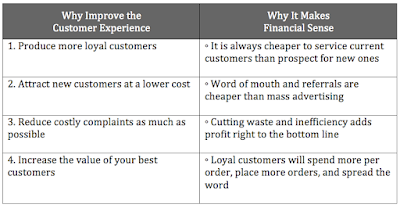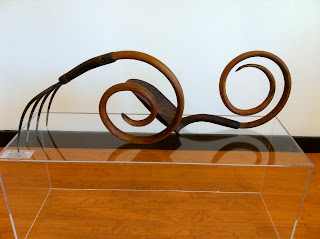 As I look back on memorable engagements of 2011, I really enjoyed my workshop with Maria Moran at the Ed Hoy’s International Premier Customer Weekend event. Here's an excerpt of my talk with the group.
As I look back on memorable engagements of 2011, I really enjoyed my workshop with Maria Moran at the Ed Hoy’s International Premier Customer Weekend event. Here's an excerpt of my talk with the group.
Any conversation about customer service always generates personal stories about a memorable experience you’ve had – at a restaurant, hotel, store, or airline. While they might stick in our minds because of how bad the experience was, but just as often we recall some wonderful moment when we were made to feel special and cared for.
If you take the time to study these experiences, you can learn from them – and even more important, learn how to replicate positive customer service in your art glass business. Whether you sell at a studio, store, gallery, online, or any combination of these, you can apply proven principles to improve your success.
Let me share with you an excellent reference on this subject. A practical book entitled, DNA of Customer Experience: How Emotions Drive Value, by Colin Shaw. In his book, Shaw summarizes the underlying reasons to elevate your level of service, plus why it makes financial sense:
I have spent nearly two decades
studying, creating, evaluating, and training on customer brand
experiences. So, I appreciate the
rigor of research conducted by the London Business School, which outlines four
clusters of emotions that can impair value – or, if addressed, can actually add
value.
First let’s look at the customer feelings that can be destructive. These
emotions are evoked in customers typically because their experience is “inside
out”. This means the business focuses more on what is good for it and less on
the experience of the customer.
The customers will describe feeling stressed, neglected, frustrated,
disappointed, hurried, or irritated.
As you improve service, you can start
with simply engaging customers’ attention. The research shows that you can
encourage customers to explore your offerings – and boost their short-term
spending – by doing things that make them feel stimulated, creative, energetic,
and indulgent.
Moving up to the next level, customers
will recommend your business
if they feel valued, cared for, trusted. That you focus on them more. Consider your
own personal experience; something nice that someone might have done for you at
home, at your child’s school, or at a place you volunteer. What did the person
do and why did you feel valued? It’s probably because you know they spent time thinking
about you, listening to you, understanding you, and personalizing a note or
gift for you. Now flip this to the experience in your business, and think about
what you could do for your best customers.
At the top of the pyramid are happy
customers who become advocates. These are customers who feel happy, pleased, and even
thrilled with their experience.
They go beyond being the most loyal to proactively telling people about
your business without prompting.
Examples of Great Customer Experiences
In our training workshops, we benchmark several successful
brands that are design customer experience we can aspire to. These include:
- Lego – giving children the opportunity to plan with their toys in shops and, even more so, letting parents experience their children having fun with Lego toys
- Zara – creating a sense of anticipation in their clothing shops, driving customers to repeat visits 17 times per year, compare to the 3-4 visits per year for regular stores
- Build-a-Bear Workshop – building a brand experience with fun and unforgettable memories in a dramatic, highly interactive theme-park-esque environment. Bright colors, larger-than-life fixtures, and customized music. All to encourage people to stay and interact with the products and the associates.
- My M&M’s Website – customizing the popular chocolate candies is a great way to add a personal touch to wedding and event favors, add some color to a birthday party, or give as a creative gift.
Improving the
experience for your art glass business
So, what are some actions you could take to plan your
customer experience? In our
training for art glass businesses, we proposed 3 areas of specific steps to
take:
1. Educate Yourself on What Your Customers Value
Conduct a survey to learn how
customers perceive your business.
The survey would profile what most interests your customers, their
desire for new offerings or services, and things they think you could improve.
2. Lead with Service to Stand Out from Competitors
Send a personal, handwritten note
to 10 recent customers and offer them a ‘refer a friend’ coupon. Review your customer list to determine
the Top 5; then contact them personally to thank them. Review the second 5
customers; then contact them to ask, “what can we do for you?” or “how was your
experience with us?”
3. Inspire Customers with Creativity
Update your website homepage with a
new attention-getting element. Add
energy to your displays or web site with color, lighting, sound/music, or
hands-on element. Create a new
display or webpage that engages customers (activity, puzzle, imagination, etc.). Create a Facebook fan page and post
something personal or inspirational weekly.
In conclusion, the science of great customer experience can
be applied to your art glass business in a variety of creative ways. When you replicate these positive
service enhancements, you will see a difference in business. And soon, you can be the one customers
remember when they tell their friends about a memorable customer experience
they enjoyed.


































